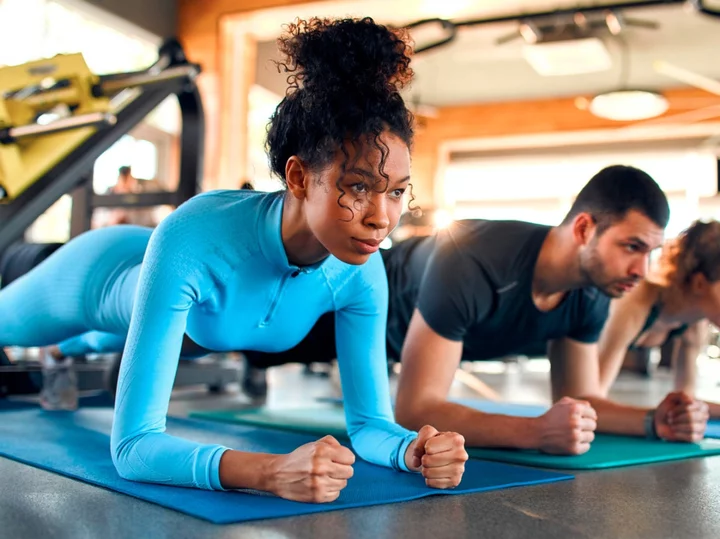
The two best exercises for lowering blood pressure, according to study
Exercises such as “wall sits” could be the best form of activity to help people reduce blood pressure, a new study suggests. Other physical activity including cardio, resistance training and HIIT workouts are also good for bringing down resting blood pressure levels, researchers found. But isometric exercises – those that involve engaging muscles without movement, such as wall sits and planks – provide the best results, they said. The study, published in the British Journal of Sports Medicine, saw researchers conduct analysis on previous studies looking at exercise and blood pressure. Some 270 studies were included in the final analysis which contained data on almost 16,000 people. They examined the impact different exercises had on systolic blood pressure, which notes the force at which the heart pumps blood around the body; and diastolic blood pressure, the resistance to the blood flow in the blood vessels between heartbeats when blood is pumped around the heart. The researchers, led by academics at Canterbury Christ Church University in Kent, found that there were significant reductions in resting blood pressure following cardio (aerobic exercise); dynamic resistance training, such as squats, press-ups and weights; high intensity interval training (HIIT); and combined training and HIIT. But the largest reductions were seen after isometric exercise training. A secondary analysis on specific types of exercises found the most benefit was seen among those who performed “isometric wall squats” and among runners. The academics said that current exercise recommendations for the prevention and treatment of high blood pressure are based on “older data” and suggest that it may be time to review the current guidelines. “Aerobic exercise training, dynamic resistance training, combined training, high-intensity interval training and isometric exercise training are all significantly effective in reducing resting systolic and diastolic blood pressure,” they wrote. “Overall, isometric exercise training is the most effective mode in reducing both systolic and diastolic blood pressure. “These findings provide a comprehensive data driven framework to support the development of new exercise guideline recommendations for the prevention and treatment of arterial hypertension.” For the average adult high blood pressure is considered to be from 140/90mmHg. When a person’s blood pressure is too high it puts extra strain on blood vessels, heart and other organs, such as the brain, kidneys and eyes. Persistent high blood pressure can lead to a number of serious health problems including heart attacks, strokes and vascular dementia. While there are medications which can help, people can make a number of life-style changes to help bring their blood pressure down including regular exercise, losing weight, cutting back on caffeine, alcohol and salt. Read More Dating app screenshot culture is out of control Husband fired from family business after wife roleplayed with reborn dolls The bowel cancer symptom George Alagiah wished he’d caught earlier Charity boss speaks out over ‘traumatic’ encounter with royal aide Ukraine war’s heaviest fight rages in east - follow live
2023-07-28 19:51

Iain Hughes: Charity swimmer confirmed dead as body found
The body of Iain Hughes, who went missing in the English Channel, was found in waters near Belgium.
2023-07-28 19:29
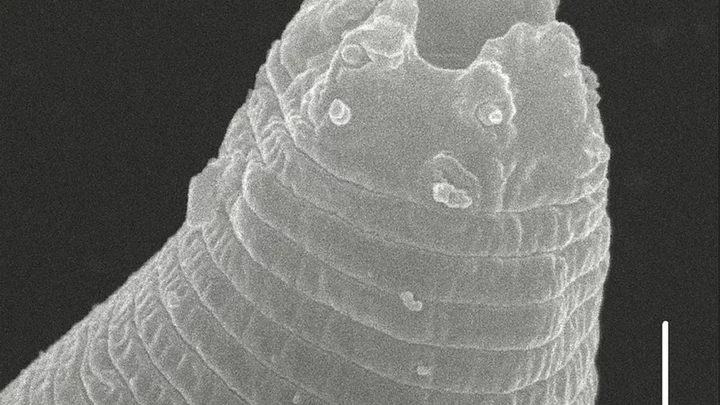
Experts resurrect parasite after 46,000 years in Siberian permafrost
Scientists have resurrected a parasite which has been dormant in the frozen permafrost of Siberia for 46,000 years. The microscopic creatures were first uncovered as part of a remarkable discovery back in 2018. At the time, researchers led by Anastasia Shatilovich found two of the worms in sub-zero temperatures in the soil. At first, it was previously thought that the creatures could stay in their slumber for just 40 years. However, it was later revealed that they could stay inactive for tens of thousands of years. Sign up to our free Indy100 weekly newsletter The creatures tend to shut down their systems when they are in unfavourable conditions. This means they won’t move or reproduce, and their metabolism stops. Carbon analysis has revealed that the worms – also known as nematodes – came from a prehistoric era. The developments could change the way experts approach bringing back other extinct species, too. During an analysis, the research team discovered the worms were Panagrolaimus kolymaensis - a species that was previously thought to be extinct. The scientists wrote in their paper: “Previously, we had shown that nematodes from the Siberian permafrost with morphologies consistent with the genera Panagrolaimus and Plectus could be reanimated thousands of years after they had been frozen. “Several viable nematode individuals were found in two of the more than 300 studied samples of permafrost deposits spanning different ages and genesis.” It’s not the only thing that scientists have recovered from permafrost, either. It was announced earlier this year that scientists are busy working on reviving 'zombie viruses’ that have been lying dormant for tens of thousands of years in Arctic conditions, and while it sounds absolutely terrifying, it could be important when it comes to protecting us all in the future. Have your say in our news democracy. Click the upvote icon at the top of the page to help raise this article through the indy100 rankings.
2023-07-28 19:22

Algeria media guide
An overview of the media in Algeria, as well as links to broadcasters and newspapers.
2023-07-28 19:19
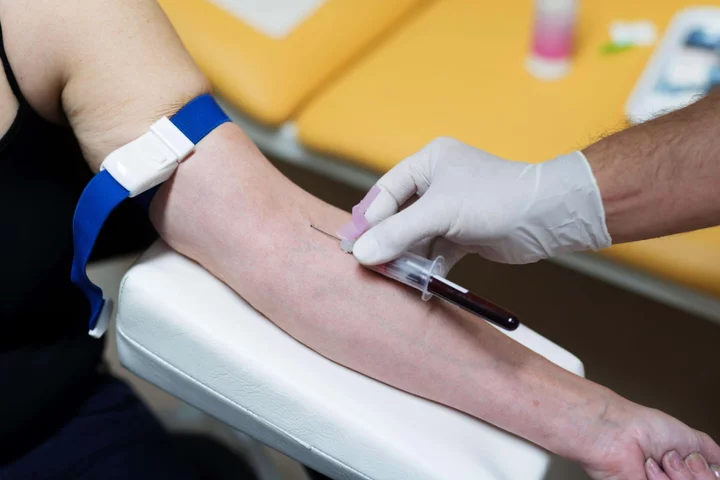
Hepatitis B and C could cause ‘significantly higher cancer risk’ than smoking daily pack of cigarettes
People living with hepatitis B (HBV) and hepatitis C (HCV) could be just as likely or more likely to develop cancer than someone smoking a pack of cigarettes a day, new research suggests. According to the Center for Disease Analysis (CDA) Foundation, people infected with hepatitis B and C viruses “have a similar or significantly higher risk of developing cancer than someone who actively smokes one pack of cigarettes per day”, and therefore HBC and HBC should be “considered as cancer causing infections and international guidelines should be reconsidered accordingly”. Hepatitis is the term used to describe inflammation of the liver, according to the NHS. Hepatitis B is spread in the blood of an infected person – it can be spread from infected women to their babies, or through unprotected sex and injecting drugs – and hepatitis C is usually spread through blood-to-blood contact with an infected person. The NHS says HCV is most commonly spread in the UK through sharing needles used to inject drugs. The foundation found that HBV and HCV viruses are highly oncogenic. Oncogenes are mutated genes which can lead to cancers in multiple organs and sites. Homie Razavi, managing director at CDA Foundation said: “Hepatitis B and C infections are silent epidemics. These viral infections are cancer causing but since infected individuals don’t show any symptoms until it is too late, most infections go unnoticed. “It is important for all of us to recognise the high risk of cancer associated with hepatitis B and C infections and get patients linked to care. Treatment can reduce the risk of cancer by 85% or more.” As part of a call on World Hepatitis Day 2023 (July 28), the World Hepatitis Alliance (WHA) has launched a campaign called ‘We’re not waiting’ with its global network of 323 members in over 100 countries, in order speed up the fight against the disease, which claims a life every 30 seconds. In a new survey, the WHA found that 42% of people around the world are unaware that viral hepatitis is one of the leading causes of liver cancer. Nearly three-quarters (74%) of those surveyed said knowing that hepatitis causes liver cancer means they are more likely to get tested, whilst 82% would get vaccinated. In total, over 350 million people have been diagnosed with either hepatitis B or C around the world, which results in more than 1.1 million deaths every year. And by 2040, deaths caused by this disease could surpass mortality from malaria, HIV, and tuberculosis combined, according to the WHA. “Every year, more than a million lives are lost to hepatitis,” said Danjuma Adda, president of the WHA. “The theme of World Hepatitis Day 2023 is ‘We’re not waiting’. It’s a call to accelerate elimination efforts of viral hepatitis now and the urgent need for testing and treatment for the real people who need it. “Individuals and communities around the world are making change happen in their own lives and in [the] world around them. We celebrate them, while demanding more action. We’re not waiting for change – we’re fighting to make it happen.” Read More Charity boss speaks out over ‘traumatic’ encounter with royal aide Ukraine war’s heaviest fight rages in east - follow live
2023-07-28 17:57

Experts reveal the most unhygienic things in your kitchen – and how to get them clean
It’s likely there are countless things in your kitchen which look clean, but actually, they’re filthy. Could your dishcloths be making you sick? When was the last time you washed your tea towels? And do we really need to bleach the sink more than once a month? We asked an expert to find out. Knobs, door handles, and buttons The buttons and dials on your kitchen appliances could be a germ-fest. “People often neglect to clean these areas of the kitchen,” says Danielle Mason, a cleaning content creator – or ‘cleanfluencer’ – who creates tutorials and videos on TikTok and Instagram. “Most of the time, they don’t think it is important, but as you’re commonly handling raw meat and food, it’s extremely important to keep these areas clean, due to cross-contamination. “Always sanitise with a cloth – I like to do this with Zoflora, as it leaves a great smell afterwards, and kills bacteria from dirty fingers.” Cloths If what you clean with isn’t clean, chances are, your kitchen isn’t either. “I always leave my cloth to soak in bleach before going to bed every night,” says Mason. “This enables a new start in the morning with no bacteria. Also, make sure you’re replacing the cloths – I would suggest a new one every two weeks, whilst still bleaching every night. And make sure you’re not using this cloth on anything other than the kitchen, as you do not want to cross-contaminate.” Sponges Mason stresses sponges are unhygienic, as they’re constantly damp and can carry E. coli. “People tend not to use sponges, as they carry so many more germs, and even putting them in the microwave will not kill all of them. Avoid a sponge where possible.” Dish towels Dish towels and tea towels may not be changed anywhere near often enough. “You should have one for every day of the week, as they carry so many bacteria and germs, which get spread across the kitchen. If you’re drying pots and pans, and then wiping down your surfaces, it’s not good,” she says. Chopping boards Chopping boards – particularly wooden ones – could be a haven for bacteria. “You should have a different colour for different types of food, one for meat, fruit, and other foods,” advises Mason. “The best way to clean them is in a dishwasher, as it’s good to get rid of all the germs due to the very high heat. If you don’t like the dishwasher, then boil the kettle water and leave the chopping boards to soak in it. I use a steam cleaner on mine, as it kills 99.9% bacteria and there are no chemicals.” It is best to avoid wooden chopping boards altogether, as these cleaning methods may damage them. Kitchen sink “This is a massive breeder of bacteria and grime; a distinct microbiome is found in sinks. “The plumbing area found beneath sinks revealed microbial communities dominated by a group of bacteria called Proteobacteria. This phylum includes pathogens such as Salmonella and E. coli, which can cause serious disease,” Mason shares. “I’ve always been taught never to wash my hands in the sink, and to never throw dirty water down the sink. You wash your cups and plates in the sink and prepare food, so it should always be kept clean, and nothing from outside the kitchen should cross-contaminate that. For example, never wash your floors and put dirty water in your kitchen sink, always throw it down the toilet.” How do you possibly clean the inside of your sink and drains? “Baking soda and vinegar is the best way to clean your sink out, or bleach, but you must be careful with bleach, as it can stay in the bottom of your sink, depending on the material it’s made of. I clean my sink out every day.” Pipes and cupboards around your sink could be leading you to have a rodent problem. “You can prevent mice and rodents from entering the kitchen by covering any small crevices or cracks. It is also important to repair leaks as soon as they happen, as they can come through the pipes,” she says. Fridges “Deep clean [your fridge] every two months. A normal cleaning – the wiping of shelves – should be done every other day with soapy water. For any bad smells, use baking soda, which will absorb the smell from the fridge,” Mason continues. “The fridge is a breeding ground for salmonella, E. Coli and other bacteria.” Bins Where you throw your waste away could be a breeding ground for germs. “Make sure you keep [outdoor] rubbish bins away from your house, and make sure you empty your bin as soon as it’s full,” advises Mason. “I personally do not keep a bin in the kitchen, I use a bag and I take that out by the end of the day, but if you are using a bin, make sure you bleach it with hot kettle water, to keep it smelling fresh.” Read More This is why you keep waking up at 4am – and what you can do about it TV chef James Martin reveals cancer diagnosis in apology over ‘bullying’ allegations Bursts of activity that make you huff and puff ‘linked to reduced cancer risk’ Charity boss speaks out over ‘traumatic’ encounter with royal aide Ukraine war’s heaviest fight rages in east - follow live
2023-07-28 17:48

Former Elon Musk colleague reveals Twitter boss ‘seems quite lonely’
It’s lonely at the top – just ask Elon Musk’s former colleagues. The Twitter owner tells the same jokes and anecdotes “over and over” and “seems quite alone,” according to a former senior executive at the company. Esther Crawford, who went viral last year after being pictured sleeping on the floor of Twitter’s office while trying to meet a tough deadline set by Musk, shared her thoughts in a post on the platform which was recently renamed X. Sign up to our free Indy100 weekly newsletter Crawford joined Twitter when it bought her startup in 2020, well before the billionaire took over the social media platform in a $44bn deal last year. The former head of product development, who was sacked in February as part of a round of 200 layoffs, said: “Elon is oddly charming and he's genuinely funny. He also has personality quirks like telling the same stories and jokes over and over. “The challenge is his personality and demeanour can turn on a dime going from excited to angry. “Since it was hard to read what mood he might be in and what his reaction would be to any given thing, people quickly became afraid of being called into meetings or having to share negative news with him.” She said Twitter employees feared being called into meetings with him or having to deliver bad news. “At times it felt like the inner circle was too zealous and fanatical in their unwavering support of everything he said.” “Product and business decisions were nearly always the result of him following his gut instinct, and he didn't seem compelled to seek out or rely on a lot of data or expertise to inform it. “I saw a person who seemed quite alone because his time and energy was so purely devoted to work.” Meanwhile, Musk appeared to put more faith in random feedback and Twitter polls than in his employees who were working to troubleshoot problems. She said: “His boldness, passion and storytelling is inspiring, but his lack of process and empathy is painful.” However, she didn’t pull any punches about the previous management either, calling it “bloated” and “soft and entitled” where “teams could spend months building a feature and then some last-minute kerfuffle meant it'd get killed for being too risky.” Musk recently killed off the iconic bluebird Twitter logo, replacing it with a white X. He has said he wants to create a super-app inspired by China’s WeChat which would offer messaging and payments as well as social media. That vision may be difficult to make a reality, after the collapse of the platform’s advertising business as marketers soured on Musk’s decision to fire thousands of employees and dial down its content moderation efforts. Have your say in our news democracy. Click the upvote icon at the top of the page to help raise this article through the indy100 rankings.
2023-07-28 17:27
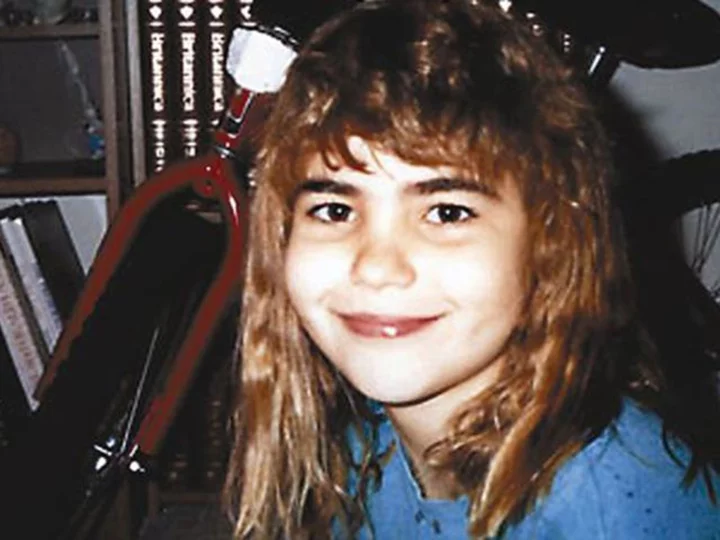
DNA analysis contributes to murder charges in 1993 killing of Tampa-area girl, authorities say
A Florida man has been charged with murder in the 1993 death of 12-year-old Jennifer Odom, a Tampa-area girl who had disappeared after getting off her school bus, authorities said Thursday.
2023-07-28 14:45

Kylie Minogue announces Las Vegas residency
Tickets are expected to go on sale on 9 August for a series of shows in Sin City later this year.
2023-07-28 10:27

The Eagles announce the death of founding member Randy Meisner at 77
Randy Meisner, who was a co-founding member of legendary rock band the Eagles and served as a bassist and vocalist, has died, according to an announcement on the band's official site. He was 77.
2023-07-28 08:58
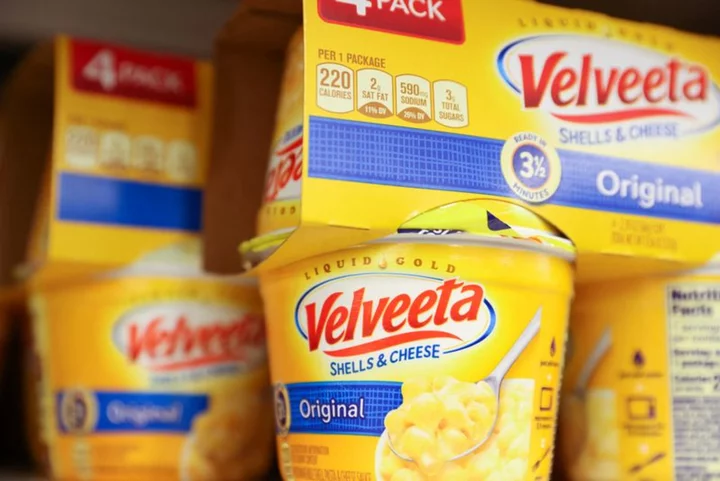
Kraft Heinz defeats lawsuit over mac & cheese preparation time
By Jonathan Stempel A federal judge on Thursday dismissed a lawsuit accusing Kraft Heinz & Co of misleading
2023-07-28 06:55

Bengals: 3 Joe Burrow replacements to add if QB misses serious time
Depending on the severity of the injury, the Bengals could be looking at Joe Burrow replacements and these three quarterbacks could be available.The scariest scene for the Cincinnati Bengals transpired at training camp on Thursday when star quarterback Joe Burrow went down with a non-contact inj...
2023-07-28 06:17
